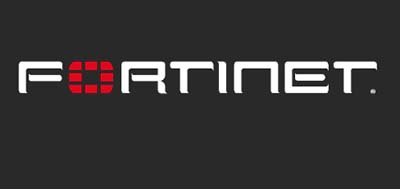By Derek Manky
Global Security Strategist, Fortinet
 Cybercrime is big business. And it is growing in scope and impact.
Cybercrime is big business. And it is growing in scope and impact.
But what may not be obvious to the casual observer is that cybercrime is growing in its magnitude and sophistication because of two key factors: the consumerization of crimeware, and the adoption of time-tested business processes to enhance the profitability of crime syndicates worldwide.
The disturbing trend in cybercrime is the “enterprise-class” approach crime syndicates take to grow their businesses. Today’s syndicates employ hierarchies of participants with roles that mirror the executive suite, middle management and the rank and file. The executive suite oversees strategy and operations that initiate nefarious acts. Recruiters identify “infantry” that carry out large-scale attack schemes on a permanent hire or outsource (affiliate) basis. They also create and hand-out malware and mold reward programs to pay affiliates once successful attacks are carried out.
Understanding “Crime-as-a-Service”
Given the ubiquitous adoption of cloud computing, social networking, BYOD (bring your own device), and mobile communications, cybercriminals now have unprecedented reach across and into more organizations, databases, desktops and mobile devices than ever before. Infrastructure advances and the enormous number of avenues for attacks are giving cybercriminals a smorgasbord of attack vectors to choose from.
To capitalize on these opportunities, cybercrime syndicates use recruiters to attract new “talent” via fully realized Web portals, many of which protect them with disclaimers such as, “We do not allow spam or other illicit methods for machine infection.” This is a method of passing off legal responsibility to the hired “infantry” while providing the necessary malware needed to execute a full-fledged infection campaign.
Fanning the Flames
The drivers of these constantly evolving tools are extensive R&D organizations that create custom-order code to produce private botnets, fake antivirus software and deployment systems. In turn, these are typically carried out for premeditated, targeted attacks – known as Advanced Persistent Threats (APTs).
Another key contributor to the expanding influence of cybercrime is the hosting provider. Simply put, criminals need somewhere to store attack content such as attack code, malware and stolen data. Taking a page out of Wall Street, crime syndicates are engaging in mergers and acquisitions to grow their botnets through the use of another organization’s botnet. A recent example is Zeus and SpyEye. Zeus, circa 2007, peaked in 2010 as the most prolific banking crime kit around. The crimeware kit would create new versions of powerful malware which had the capability to steal banking credentials, as well as hijack and manipulate secure online banking sessions. A rival botnet known as SpyEye emerged in 2010 and tried to take over what was clearly a successful market. The competition hurt profits for both, so in late2010, the two authors merged source code, retired Zeus support and passed the torch to SpyEye.
And with creative profit-sharing flair, crime syndicates are continuing to grow sophisticated pay-per-click/install/purchase affiliate programs to reward up and coming cybercriminal affiliates on a performance-based scale.
How to Stop It
Given this grim outlook, what successes are turning the tide? Several large-scale botnet takedowns showcase the advantages of working groups and task forces.
For example, with the help of Microsoft Digital Crime Unit, the Kelihos botnet, rumored to have as many as 40,000 bots, was taken offline in September 2011. This collaboration between Microsoft and the US government led to the prosecution of Kelihos operators.
In January 2013, the large, Eastern European botnet Virut was taken down with the help of local Community Emergency Response Teams and partners. This particular botnet had control of close to 900,000 unique IP addresses in Poland alone and is thought to be the fifth most widespread threat in 2012. Virut was a widespread threat from as early as 2008, as it had a unique hybrid capability that allowed it to spread through other botnets. In essence, it was using the competition to amplify its success. Since Virut code was complex and could embed itself in other infections, detection and take-down was difficult over a five-year run.
Regrettably, these stops are a drop in the bucket. Kelihos, for example, came back in another form after being stopped. While the dismantlement of a botnet’s command and control center is optimal, another preventive strategy to clamping down on cybercrime is to vet domain registrations to avoid the creation of these domains. A good case in point is the Conficker Working Group that helped filter out domains before they could be registered to prevent the spread of that particular botnet.
But the best approach to effectively fight cybercrime requires global participation. We need an international body that can mediate disputes and dispatch resources to share information about cybercrime trends. A central reporting and information sharing channel between the private and public sectors is also needed. The best example of this kind of information sharing thus far is FIRST (Forum of Incident Response and Security Teams), circa 1990. When it comes to law enforcement, varying jurisdictions and laws complicate the prosecution of cybercriminals. FIRST helps to address this problem through collaboration. Unfortunately, many attacks are handled outside this forum and ad-hoc crime fighting groups seem to pop up like a game of whack-a-mole. It is apparent that the best way to take a chunk out of cybercrime is attacking its Achilles heel − going after the cash flow itself. The best targets would be affiliate programs − the cash cows that pay out commission and rewards to hired affiliates (“infantry”) who carry out malicious attacks. If the well dries up, so will the rest of the food chain.
So, where does this leave us? Practically speaking, the most effective way to secure a business from crimeware is from the inside out. Organizations need to take matters into their own hands to proactively prevent the spread of cybercrime among its employees, partners and customers.
What this amounts to is a highly layered security strategy consisting of vital elements that include intrusion prevention, botnet and application control, Web filtering, antispam, and antivirus. Companies must engage in regular accounting of digital assets and assessment of potential security flaws. Organizations must aggressively educate users about security best practices while implementing enforceable mechanisms for security policy violations. They must also implement an incident response plan – “what happens if?” It is imperative for companies to work together with security experts in this highly dynamic threat landscape.
Through collaborative global efforts and organizational commitment to deploying aggressive multi-layered security policies, the cybercrime epidemic can eventually be contained.
Derek Manky is the global security strategist for Fortinet, and formulates security strategy based on years of threat and industry knowledge, with a goal to making a positive impact towards the global war on cyber crime. Manky has presented research and strategy worldwide at many security conferences, including meetings with leading political figures who help define the future of cyber security. Manky designed a responsible disclosure framework, which has been reliably used for years to responsibly fix security issues before criminals discover and attack them.


















































































































